I went to the Metropolitan Museum of Art, on 86 street and 5th Avenue, where I was able to catch a short film, which is considered one of the best arts created to date. Stasi City (1997) is universally considered one of the most impactful works of video art of the last half century, because it was one of the first films to date that could be classified as an experimental film. the four-channel video installation is a dizzying tour of the former headquarters of the East German secret police (Staatssicherheit) housed behind a nondescript row of buildings in the former East Berlin.
When I walked in the room and saw the movie playing on four walls all in different scenes yet syncing up at the same time really threw me. As an outsider privy to this place even existing, the circumstances that these rooms were in really emphasized torture and struggle. Throughout the film, there’s a boy floating around, and I interpreted that as a spirit that lingered in this place trapped forever because this is where he lost his life.
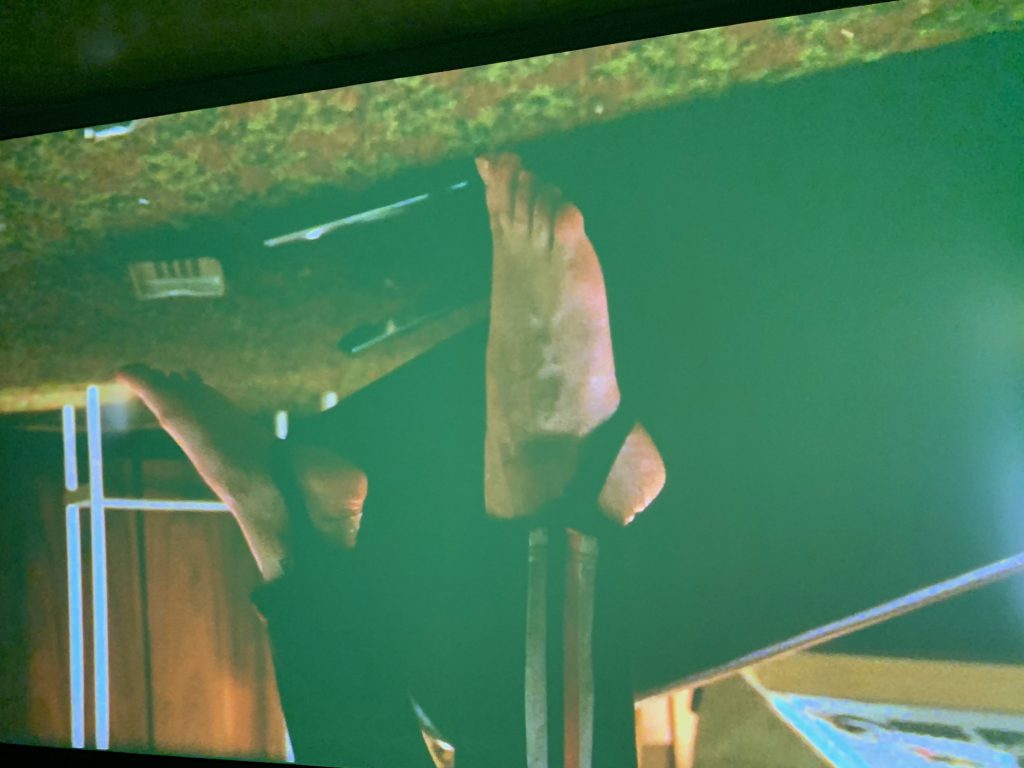
Another very interesting trait about this piece is that it’s a silent film. For a silent film to be this suspenceful and this attention grabbing I’m sure was a rarity when this first released in ’97. The slowness of the footage evokes surveillance, the feeling of being watched, as does the installation’s layout, which draws the visitor into a corner.
Jane and Louise Wilson, the creators of Stasi City, were able to bring to life a very dark and overlooked moment in German history which I feel also make this piece very historic. The fact that this was one of the first film pieces to publicly expose some of the horrors that were going on in these rooms really magnified the dehumanization that went on behind closed doors.
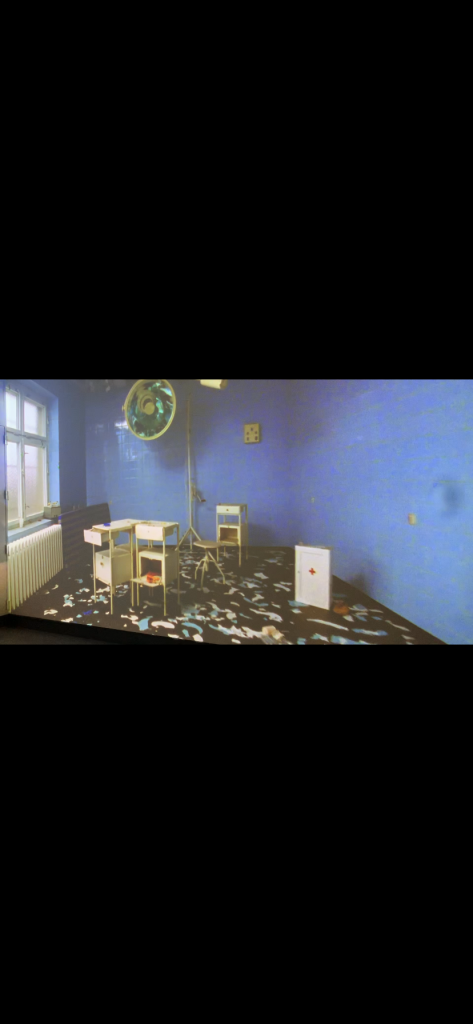
I was a Journalism Major at one point before switching to Media Studies and this piece really reminded me of a Feature Article. Not your typical “soft news” Feature, but more like a story that a reporter had been working on for a while, digging up as much information as possible to them expose corruption almost like a breaking news story or something to that effect.
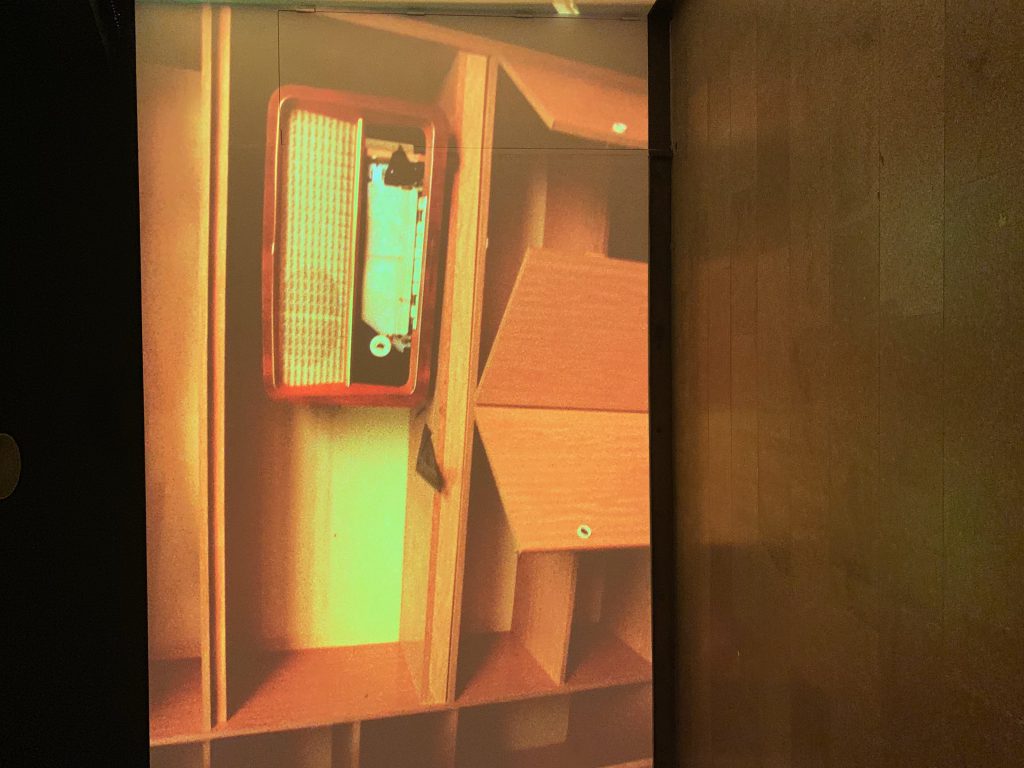
I really enjoyed the silent film and it made me think a lot on more of a journalistic side in terms of the approach and making is silent to add that much more suspense. Jane and Louise Wilson had real courage to make such a sensitive film public, but by doing so, they let the world know what was happening in Germany behind closed doors almost like a reporter breaking a story on a government corruption scandal here in the United States.
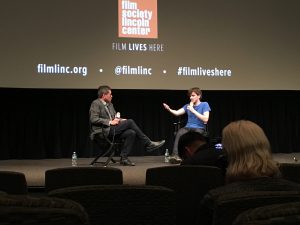
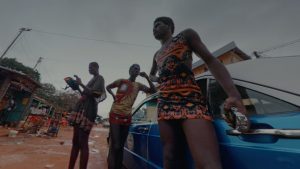 I saw lots of abrupt cuts, unique angles and replacements of cameras, and less explanations. All the films focus on young males and how they interact with each other. The shared theme among the three pieces seemed to be nature, plants, and fruits such as boys hanging out in abandoned buildings, cave, and around their houses. The locations of the shoots are different for each film including Argentina, France, and Vietnam. However, the director did not use conventional texts indicating time and location or personalize characters. It actually depersonalizes the image and characters. I started to realize there are more similarities than differences among people all over the world. Third piece was very interesting and experiments with the boundaries of repetitions where sounds get extremely overwhelmed. All of the sounds are juxtaposed two sentences starting “Seems like A is B” and last throughout the entire film. Moreover, image the filmmaker chosen to go along with the sentences are footage taken from 360 degree GoPro attached to roller skaters and men dressed as women cruising a town with their car. Again, no explanations to those characters at all and the image seem to be pretty much observational.
I saw lots of abrupt cuts, unique angles and replacements of cameras, and less explanations. All the films focus on young males and how they interact with each other. The shared theme among the three pieces seemed to be nature, plants, and fruits such as boys hanging out in abandoned buildings, cave, and around their houses. The locations of the shoots are different for each film including Argentina, France, and Vietnam. However, the director did not use conventional texts indicating time and location or personalize characters. It actually depersonalizes the image and characters. I started to realize there are more similarities than differences among people all over the world. Third piece was very interesting and experiments with the boundaries of repetitions where sounds get extremely overwhelmed. All of the sounds are juxtaposed two sentences starting “Seems like A is B” and last throughout the entire film. Moreover, image the filmmaker chosen to go along with the sentences are footage taken from 360 degree GoPro attached to roller skaters and men dressed as women cruising a town with their car. Again, no explanations to those characters at all and the image seem to be pretty much observational.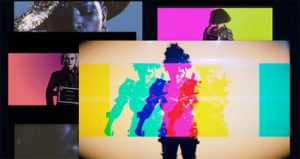
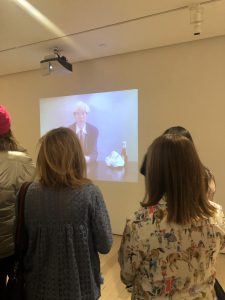
 am a huuuuuuge minimalist. I;m not saying her work is totally minimalistic, but it definitely had that kind of impact on me. Each piece was so simple, yet intricate at the same time.
am a huuuuuuge minimalist. I;m not saying her work is totally minimalistic, but it definitely had that kind of impact on me. Each piece was so simple, yet intricate at the same time.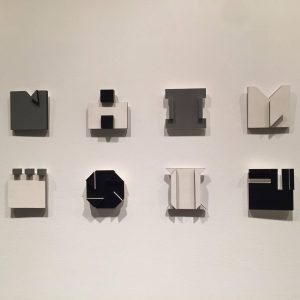
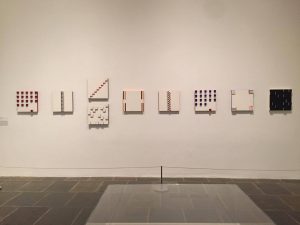
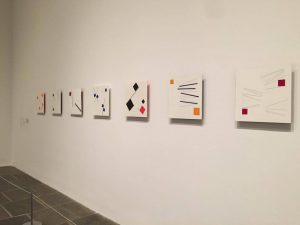
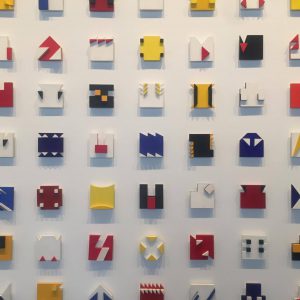
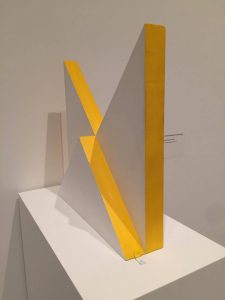 t honestly, it’s just one of those pieces I adore without much analysis. It’s aesthetically pleasing and I would love to take it home. I forgot what it was called, but nevertheless, I loved it.
t honestly, it’s just one of those pieces I adore without much analysis. It’s aesthetically pleasing and I would love to take it home. I forgot what it was called, but nevertheless, I loved it.